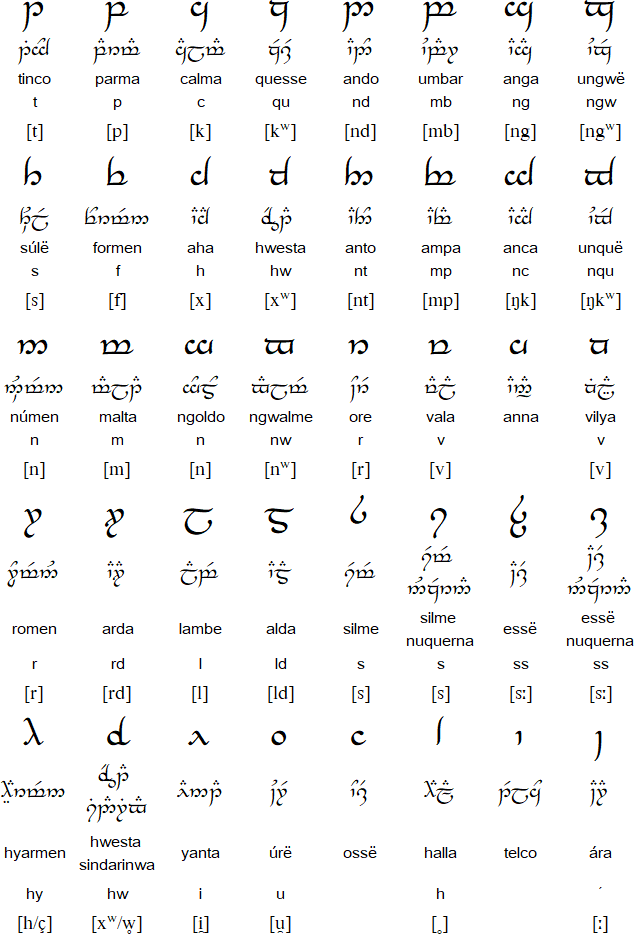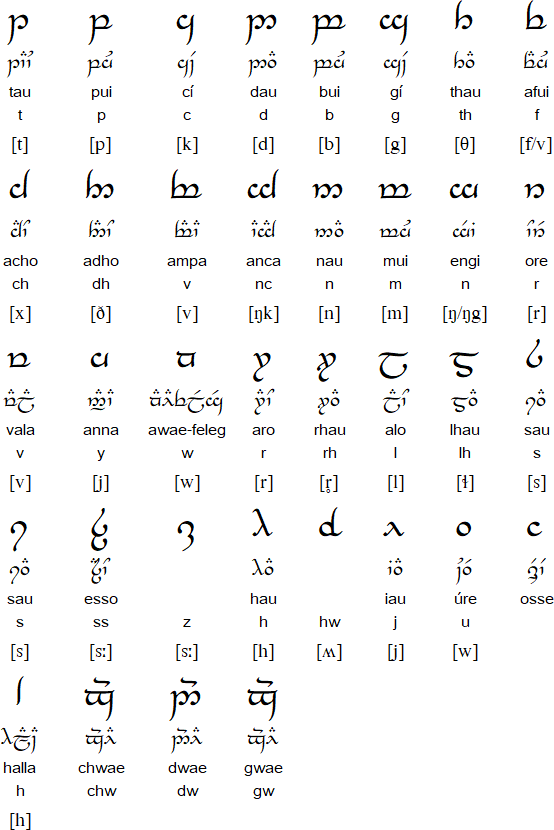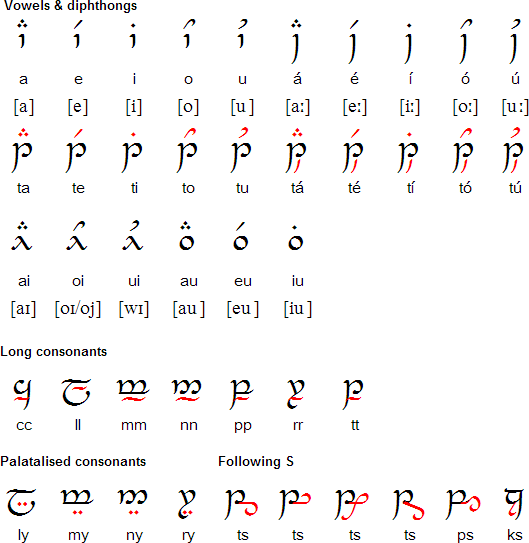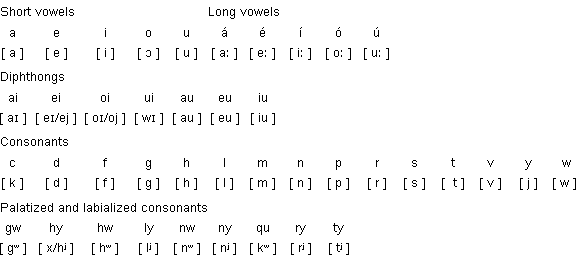Tengwar 
Origin
J.R.R. Tolkien created many languages throughout his life. He wrote
in one of his letters that the tales of Middle-earth (The Hobbit, The
Lord of the Rings, The Silmarillion, etc) grew from these languages,
rather than the languages being created for use in the stories.
Tolkien also created a number of different alphabets to write his languages
– Tengwar, or Feanorian letters, is the one which appears most frequently
in his work. The way the vowels are indicated in Tengwar resembles
Tibetan and other Brahmi-derived scripts.
Notable features
- Written from left to right in horizontal lines.
- Tengwar is written is a number of different ways known as "modes".
For example there is a Quenya mode, a Sindarin mode and even an English
mode. The phonetic values of the consonants (tengwa) and the ways
vowels are indicated varies from mode to mode. - Vowels are indicated by diacritics (tehtar) which appear above the
consonant which precedes them (in Quenya mode) or above the consonant
which follows them (in Sindarin mode). When vowels stand on their own
or come at the beginning of a word, the diacritics appear over a special
vowel holder. Long vowels are always attached to a vowel holder. - Consonants are doubled by adding a wavy line below them.
- When followed by a vowel, the letters /s/ /ss/ and /r/ are written
with the tengwa silme nuquerna, esse nuquerna and rómen respectively.
Otherwise these letters are written with the the tengwa silme, esse
and óre. - When the letter /s/ follows another consonant it is written with
a little downward hook.
Used to write
A number of different languages of Middle-Earth, such as:
Quenya, Qenya or High-Elven, the most prominent language of
the Amanya branch of the Elvish language family. Tolkien complied the
"Qenya Lexicon", his first list of Elvish words, in 1915 at
the age of 23 and continued to refine the language throughout his life.
It is based mainly on Finnish, but also partly on Greek and partly on
Latin.
Sindarin, the language of the Grey-elves or Sindar. Tolkien
based Sindarin on Welsh and originally called it gnomish.
Sylvan, Westron, etc
Tengwar can also be used to write English,
Welsh, Scottish Gaelic,
Spanish, Swedish, Polish, Esperanto and a variety of other
languages.
Quenya mode
Consonants

Sindarin mode
Consonants

Vowels (same for Quenya and Sindarin modes)

Vowel placement

Extra Tengwar
These letters are used for Tolkien’s other languages,
such as Black Speech, and also in English mode.

Punctuation marks

Numerals

Tengwar numerals are written from right to left.
Pronunciation of Quenya

Quenya pronounciation provided by Joshua Boniface
Sample text (Quenya)
![]()
Transliteration / Translation
Elen síla lumenn’ omentielvo / A star shines on the hour of our meeting
Sample text (Sindarin, Beleriand mode)

Transliteration
Ennyn Durin aran Moria: pedo mellon a minno!
Im Narvi hain echant. Celebrimbor o Eregion teithant i thiw hin.
Translation
Gate of Durin, King of Moria, say friend and enter!
I, Narvi made them. Celebrimbor of Eregion drew these signs.
(inscription on the Gate of Moria)
![]()
